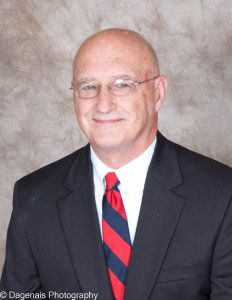
When selecting neutral or case hardening furnaces that require pits and have vertically mounted radiant tubes, facility managers must make sure that the equipment will fit within the space selected. Oil and salt hardening systems require quenching in tanks connected to the hot zone either directly, separated by an intermediate chamber, or completely stand-alone.
When load heights exceed approximately 18 inches, quench tanks will likely be located in pits to ensure that the floor to tray height does not exceed 50 inches. Why 50 inches? I can only guess, but I believe it provides the maximum ergonomic working height when load heights of the most popular batch furnaces are 36 inches. If the quench tank was to sit directly on the floor, the tray would be six feet above the floor and much too high for storage tables and associated equipment. AFC-Holcroft’s 36-48-36 UBQ batch furnace requires a 24-inch deep pit to facilitate the 50-inch hearth height. Higher load heights will require deeper pits sometimes in the 6-foot depth range. In addition to requiring a pit, furnaces with vertically mounted radiant tubes must have enough elevation to lift the tubes out of the hot zone for maintenance, thus the furnace hot zone must be located under an overhead, or jib crane. In some cases, a jib can be mounted on top of the furnace to facilitate the task.
Overhead clearance is one of the two critical constraints one must consider when positioning furnaces within the plant space. The second is what’s located under the concrete floor when a pit is required; high water table, unmarked pipes, etc.
In an effort to solve a decades old maintenance problem associated with endothermic generators, AFCH identified that overhead clearance could become a marketing advantage for AFC-Holcroft’s endothermic generators; that concept led to the development of the EZ™ Endothermic generator.
Traditional endo generators must have their process gas retort removed through the top of the casing, necessitating the extra elevation, many times exceeding 24 feet of total height from the floor. However, the EZ endo generator has a door that provides easy horizontal access for removal, allowing the generator to be placed in almost any plant location. Since they were introduced to the market 14 years ago, they’ve become a very successful product for AFC-Holcroft. Recently, other manufactures have begun to offer their version of a door, so I guess the cliché “imitation is the sincerest form of flattery” even exists in the heat-treating world.
When an OEM or commercial heat treater makes the decision to purchase a hardening furnace system, they know their production requirements, and they know which hardening process they need — carburizing being the most popular process. Typically, the decision makers will create a comparison spreadsheet itemizing the critical parameters they require for their particular situation.
Following are some features that a heat treater might desire:
1. Endo generator, nitrogen/methanol or LPC (low pressure carburizing).
2. Oil, salt for austempering or HPGQ (high pressure gas quench).
3. If it’s a commercial heat-treat process flexibility may be a necessity.
4. Overall load size that will accommodate production requirements.
5. What’s the pit depth required for each manufacture?
6. Type of refractory in the hot zone; brick or fiber.
7. Gas or electric heat.
8. Ceramic or heat-resisting alloy radiant tubes.
9. Vertical or horizontal heating tubes.
10. Slow cool chamber in addition to the oil quench; a flexibility issue.
11. Automation:
Control system:
• Brand of PLC, AB, Siemens, etc.
• Integrated or stand-alone temperature and carbon potential control.
• Atmosphere flowmeters, analog or digital.
• Recipe management, discrete or a SCADA system.
Lights-out or manual tray manipulation:
• Material handing such as programmed load manipulation is primarily a consideration for OEMs and large commercial heat treats.
• Finally, what does the equipment cost?
– Cost of installation.
– Cost of operation, overall efficiency.
– Cost of spare parts.
– Availability of spare parts.
– Can spare parts be purchased commercially or from the OEM only?
These are just some of the more common considerations that factor into the buying decision. But actually, how much does the necessity for a pit and overhead clearance play or not into that decision? If a 36 wide x 48 long x 36 high batch IQ furnace was to be offered by an OEM that still maintained the 50-inch hearth height and required, like the EZ, no extra overhead clearance and did not require a pit and would still accommodate a standard tray footprint, would those features get a heat treater’s attention?
Is this actually possible? We’ll find the answer and more in columns to come.





















